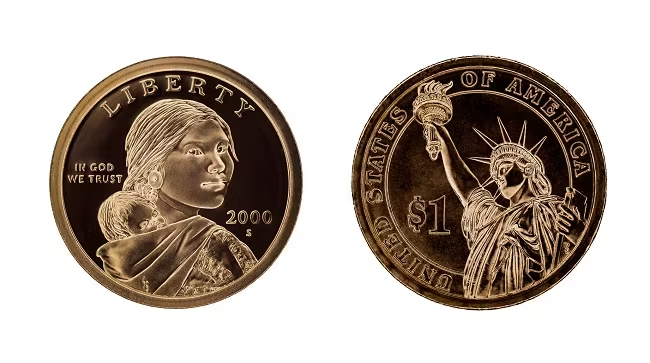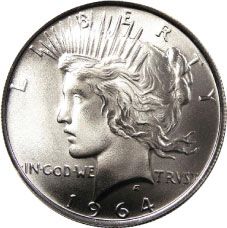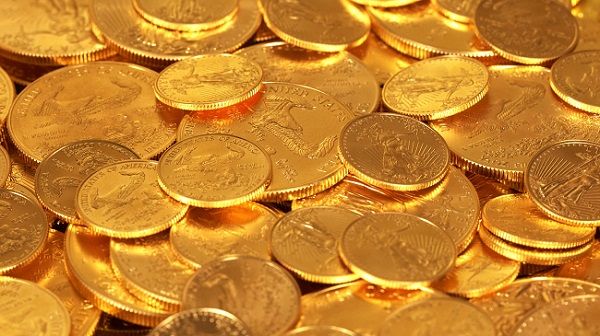Gold Miners Are Trading Drills for Deals
Posted on — Leave a commentIt’s getting prohibitively difficult to source gold deposits. Mining companies are learning that the easy-to-access gold is all but gone. Now, finding gold means excessive exploration costs. Even when they make a find the cost of getting the location up to production is exorbitant.

Therefore, the mining companies are finding a different way to get gold. Instead of drills they’re using deals. “The amount of capital being put into gold mines is at most nonexistent. All of the money is being used to buy up rivals,” explained billionaire Sam Zell who recently announced that he bought gold for the first time in his life. “It’s a good hedge,” he explained.
His assessment is supported by numbers. The output of gold from major discoveries has been in decline for years and budgets for exploration have not approached their 2012 peak. Moreover, the Canadian Imperial Bank of Commerce (CIBC) forecasts that we are approximately 2 years from peak production. From that point outputs will fall as more people hold on to their gold as supply becomes scarcer and demand grows.
This is good news for gold investors because our world has a deep dependency on electronics like smart phones that rely on gold for critical components. While in-ground gold finds are going away, our insatiable appetite for tech is not. For nearly the last decade the gold market has been characterized by a net buyer situation meaning that there is greater demand than supply.
Interestingly, gold miners may become the central reason for diminished gold stock. As more of these companies awaken to the immense costs of finding gold, they are likely to turn away from digging. Instead, they appear to be focused on buying other companies that hold gold. As industry consolidation increases, miners have a greater interest in acquisitions, not drilling. Consider that Barrick Gold and Randgold Resources recently announced their plans to merge. Not long after this announcement, Newmont Mining planned to buy rival Goldcorp.
It’s not surprising to hear that Nick Holland, the CEO of Gold Fields recently explained that “if you are going to survive in the long term, you are going to have to look at consolidation.” For many companies merging is the only way to survive. The reason: “All these companies during the boom years, they were building projects that didn’t generate good returns and blowing out their balance sheets and taking on too much debt,” explained Joe Foster, portfolio manager of the $666 million Van Eck International Investors Gold Fund.
The bottom line for investors is that now is the time to buy. Resources are scarce and they’re only getting scarcer. Just as miners are finding ways to access gold via purchases investors should consider the same. Given the research and analytics possessed by the major miners, it seems reasonable to take a cue from their strategy and buy.
The True Cost of the Government Shutdown (and Why It Bolsters the Case for Gold)
Posted on — Leave a commentIt’s not just the 800,000 Federal workers who are hurt from this partial government shutdown, which now scores the dubious honor of being the longest ever in U.S. history.
It’s the United States economy too.

The partial government shutdown has a spiraling impact on the economy and is hurting economic growth.
Real GDP growth is falling a tenth of a percentage point for every two weeks that the partial shutdown persists, to the tune of about $1.2 billion per week, according to Beth Ann Bovino, S&P Global Ratings chief U.S. economist.
Looking at individuals, recent news coverage of hardship among federal workers is real.
The Background
As of Tuesday January 22, the federal government has been shut down for 31 days – an all-time record length.
There have been 15 American government shutdowns since 1980.
Government shutdowns happen when Congress fails to pass legislation to fund the federal government at a required deadline. The current impasse has Republicans and Democrats facing off over the Trump Administration’s demand for $5.7 billion in Wall funding at the Mexico/U.S. border.
The Key Takeaways
About 58% of Americans call the current shutdown a “very serious problem,” according to a new Pew Research Center survey.
If government is perceived as the problem, it raises real issues around trust. The U.S. government in effect controls major issues that impact the personal finance of your everyday lives.
How the Government Impacts Your Finances (a short list)
The government impacts your finances is many ways. This is a short and incomplete list.
- Whether you get a paycheck (if you are a federal worker).
- If you will get your full Social Security benefits (after the current trust fund runs out in 15 years).
- How much you pay in taxes.
- The interest rate you pay for a home mortgage, auto loan or credit card debt.
- How much inflation eats up your purchasing power year after year.
- What the U.S. dollar is actually worth.
- How much debt our government continues to rack up (currently at 21.9 trillion dollars).
- Indirectly, monetary policy also affects the stock market – will it rise or fall.
With the government shutdown now extending a month, it’s time to look at how much impact the government has over your finances – and our currency the U.S. dollar.
The argument for owning physical gold continues to increase on a daily basis.
Gold is recognized as a currency and store of value in every country around the globe, yet is not tied to or beholden to governmental liabilities like debt.
Do you own enough gold to hedge against continuing government dysfunction? It seems to be getting worse, not better. Take ownership of your financial future and increase the amount of physical gold you own today.
Golden Dollar Coin Honoring a Famous Native American Woman
Posted on — 8 CommentsEvery school child in America grew up learning about Sacagawea.

She, of course, was a legendary Native American (Lemhi Shoshone) woman who helped Meriwether Lewis and William Clark on their exploratory expedition from North Dakota across the Rocky Mountains to the Pacific Ocean and back in 1805-1806.
Sacagawea was born in 1788 or 1789 around the Salmon River region, in current day Idaho. In 1803 or 1804 she was married to French-Canadian fur trader Toussaint Charbonneau and quickly became pregnant.
Why was Sacagawea chosen to embark upon a journey, carrying her infant son, lasting thousands of miles across desolate and often dangerous land?
She was bilingual in two very different Native American tribal languages – Hidatsa and Shoshone. While her husband spoke French, English and Hidatsa. This translation chain was viewed as extremely valuable. Lewis and Clark knew they would need help communicating with the Shoshone tribes at the headwaters of the Missouri River.
Her work as interpreter proved invaluable and also her presence in the group demonstrate the peaceful nature of the mission.
Sacagawea Coin History
In the year 2000, the United States Mint honored Sacagawea and her contributions to the early explorations of our great nation with the Sacagawea Golden U.S. Dollar coin. The coin was minted under the auspices of the United States $1 Coin Act of 1997.
The creation of the new coins were attempting to meet a need for vending machine use.
The Susan B. Anthony dollars were popular for vending machine use but the U.S. Treasury’s supply of these coins were dwindling by the late 1990s. The act also provided direction to resume production of the Susan B. Anthony dollars until the new coins were ready for circulation.
A design contest was used to select the final representation of Sacagawea with her infant son, with the reverse side of the coin featuring an eagle representing peace and freedom. Sculptor Glenna Goodacre’s design was chosen and she was paid a $5,000 commission in the dollar coins. The 2000-P coins paid to Goodacre were struck on burnished blanks, which created a unique striking for her set.
By and large, the majority of gold Sacagawea coins are not rare and circulated coins do not carry numismatic value. They are also not true gold coins, despite the golden color. The coins were composed of primary copper (77%), with small portions of zinc, manganese and nickel.
The coins still circulate today, but proved to be unpopular with the public and are not widely used.
There are a few key dates that are rare and have value beyond the $1 mark on the coin.
The U.S. Mint embarked upon partnerships with both Wal-Mart and General Mills to promote the use of the Sacagawea coin in commercial transactions.
Remember the days when you’d open a cereal box and get a prize? The partnership with General Mills included 10,000,000 boxes of Cheerios cereal that would contain a Lincoln cent as a prize or a new Sacagawea dollar. Some lucky Cheerios breakfasters would receive a certificate redeemable for 100 Sacagawea dollars.
Some of the gold Sacagawea coins that were found in the Cheerios boxes were struck from a different set of dies. Within numismatic circles, these coins which showed “high detail” and enhanced eagle feathers on the reverse side of the coin became known as the “Cheerio Dollars” or “enhanced reverse die.” These are valuable and depending on the grade have sold for $5,000 to $25,000.
Do you have jars of old coins sitting around? Check out any 2000 Sacagawea dollars and search for enhanced eagle feathers. You might find something more valuable than just a dollar.
Precious Metals Are on the Move
Posted on — Leave a commentThe Wall Street pros who said gold would have a good year got it right. For the past six weeks, the price of gold has climbed straight up. In fact, the price of gold recently touched a major level that many traders and investors watch: $1,300 an ounce.

Why is this important?
The $1,300 level is a major “psychological” and “technical” area for gold, and the recent touch of that zone marks the first time since mid-June that gold has traded that high.
Day traders have been “testing” the $1,300 an ounce level in recent days. The price of gold creeps toward that level then falls back slightly.
Gold is gearing up for a big, potentially explosive move.
With everyone watching the $1,300 an ounce level, once that falls it will trigger massive buying. Traders are looking for a fast move to the $1,325-$1,330 an ounce area and could hit the $1,350 level within two months.
Silver isn’t far behind. The price of silver roared up to the $16.00 an ounce level in early January, its highest level since mid-July.
Some Wall Street pros expect silver could spike as high as $16.50 in the next month.
With the U.S. government in political gridlock – and partially shut down, a perfect storm is brewing. The economic and financial conditions are supportive for a big move higher in precious metals.
What does this mean for you?
There’s never been a better time to buy physical gold and silver. This is a rare opportunity to accumulate assets with true, long-lasting value.
Here’s 4 reasons the World Gold Council recently cited that make gold a valuable strategic asset for investors:
- A source of return.
- Low correlation to major asset classes in both expansionary and recessionary periods.
- A mainstream asset that is as liquid as other financial securities.
- A history of improved portfolio risk-adjusted returns.
Gold is recognized in every country around the globe as having value.
How much gold do you own right now? The price is going up fast. Act now before prices go any higher.
Our Top Recommendations
- One-ounce American Gold Eagle Coin
- Rarity: $20 Saint Gaudens Double Eagle Gold Coin
- Silver Bars: 1 Kilo
Custom Recommendation
Not sure what is the best investment for you? Call Blanchard today at 1-800-880-4653 for an individualized portfolio recommendation.
Related Stories
The 1964 Peace Dollar That Never Was
Posted on — Leave a commentIn 1965 the US Mint melted 316,076 silver dollar coins that never reached circulation. These coins were the early batches of an initiative intended to coin 45 million silver dollars. The story of “the coins that never were” began with one man in Nevada.

Representative Image
In 1918, Senator Key Pittman of Nevada championed the Pittman Act. The intention of the Federal law was to convert 350,000,000 standard silver dollars into bullion. To fulfill this mandate the Government purchased approximately 209,000,000 ounces of silver from American mines. This massive haul of silver would become the basis for a series of coins minted from 1921 to 1928, then once more between 1934 and 1935.
Officials wanted a unique design for the coins that would convey a theme of peace. After holding a design contest artist Anthony de Francisci became the winner for his profile image of the Goddess of Liberty and bald eagle with an olive branch on the reverse. This design was met with greater public approval than the first design which included the image of a broken sword. This original design was thought by many to appear as an image of defeat.
By 1928 the mint had fulfilled the requirements underpinning the Pittman Act. However, new legislation ushered in a new period in which additional peace dollars were minted between 1934 and 1935. Then, the coinage of the peace dollar ended. That is, until the turbulent era of the 1960s came roaring forward.
The price of silver started to climb. Banks began to feel pressure as demand for silver coins grew. In response to demand, the 1964 Congress approved a measure to produce 45 million silver dollars. The order came from President Lyndon Johnson despite opposition from other government officials. Production began the following year.
The peace dollar was back.
However, in late May of the same year, Congressional leaders successfully moved to cancel the minting. The new directive to melt the coins proved difficult. In an effort to accelerate the process, the mint decided to ensure all coins were accounted for by using weight measurements rather than the longer process of counting all the coins. This method may also have been preferable given that the coins never reached circulation and therefore were entirely within the confines of the US Mint.
In time there have been rumors that a few precious coins escaped destruction. In fact, mint records reportedly claim that two test strikes surfaced belonging to a set of 30 test pieces that were part of an inspection batch originally sent to Washington. The two coins were retrieved, then placed in the Treasury Vault until 1970. Then, they were destroyed.
The history and rarity of the coins has inspired some to produce fraudulent counterfeit pieces. In the meantime, the US Mint has responded stating that it is illegal to own even a real 1964 Peace dollar.
Today, the 2019 United States Official Coin Red Book address the topic of existing 1964 Peace dollars by simply stating, “many deceptive reproductions exist.”
Stock Market Turbulence, Rising Political Concerns Dominate Fourth Quarter
Posted on — Leave a comment2018 went out with a bang.
Gold climbed steadily throughout the fourth quarter ending the year at a six-month high as investors clamored for the safety and security of precious metals in today’s increasingly turbulent environment.

The U.S. stock market recorded its worst December since the Great Depression.
Rising investor pessimism drove stocks sharply lower throughout the fourth quarter. America’s trade war with China, President Trump’s attacks on the Federal Reserve, cabinet level departures in the Administration, and a partial federal government shutdown triggered massive stock market selling.
The stock market closed out 2018 with the worst yearly decline since the 2008 Global Financial Crisis.
Fourth Quarter Marked Key Cycle Changes
Could the lengthy bull market in stocks be ending?
The fourth quarter 2018 could prove to be a pivotal cycle change for financial markets. Here’s what we saw over the last three months.
- Gold reversed early year weakness in the fourth quarter soaring 8% higher from October 1 into year-end.
- Stocks topped in late September and then plunged sharply. In the fourth quarter, from peak to trough, the S&P 500 fell a stunning 19.8%. In the final few days of trading, light profit-taking eased the fourth quarter declines, but the downtrend remains in place.
The stock market gained in the first half of 2018 in large part due to unprecedented and overprescribed fiscal stimulus from Washington D.C. (tax cut package). While the fiscal stimulus provided an artificial lift to economic growth in the stock market in the early part of 2018, America will be left with a hefty hangover in 2019 and beyond as the deficit climbed sharply in direct response to those dramatic tax cuts.
Bearish Stock Sentiment Is Rising
The American Association of Individual Investors (AAII), a nonprofit education group, released its latest AAII Sentiment Survey in late December. Here’s what it found.
Half of individual investors now describe themselves as “bearish” for the first time since 2013.
“Market volatility and worse-than-anticipated returns are influencing individual investors’ outlook for the stock market. Also having an influence are Washington politics (including President Donald Trump and the change in House leadership), tariffs (particularly the ongoing trade war with China), corporate earnings, the Federal Reserve, valuations and concerns about the pace of economic growth,” AAII said.
The Investment Case for Gold Is Powerful Right Now
If you have money invested in stocks through a 401k or IRA, you may be feeling a little nervous right now. Rightly so. You aren’t alone. Rising anxiety is one of the reasons that gold prices climbed 8% in the fourth quarter as investors know gold is a powerful stock market hedge and a proven store of wealth. When stocks fall, gold prices historically climb – often sharply.
Government Shutdown and Divided Government in 2019
As the New Year opens, the U.S. government remains in the midst of its third federal government shutdown of 2018.
Over the next few months, Americans will get a taste of how the divided government could function throughout the second half of President Trump’s term.
The midterm elections in November made history with a record number of Americans flocking to the polls to vote. The November elections marked the first midterm election in history to attract over 100 million people to the poll as Democrats gained control of the House of Representatives. Republicans retained control of the Senate.
Brace for legislative gridlock. Expect both political parties to have a hard time delivering on their campaign promises with a divided Congress. The spirit of political compromise and willing to work across the aisle doesn’t exist in the current environment.
Federal Reserve: almost done with rate hikes
In December, the Federal Reserve hiked interest rates again, nudging the official funds rate to 2.25-2.50%., The big news out of the December meeting were hints the Fed would only raise interest rates twice in 2019, not the previously expected three.
The Federal Reserve meets next on January 29-30. Few on Wall Street expect another rate hike to come so soon in January.
Looking Into 2019
Downside risks are real for 2019. The stock market is forward looking. The global economy is expected to slow in 2019. This slowdown will likely be led by the US, where a combination of higher interest rates and the fading effects of the unprecedented Tax Cut-fiscal stimulus will start to weigh on the economy.
While the U.S. economy was still growing in late 2018, the risk is that recession could become a self-fulfilling prophecy. Expect stock market volatility to continue, or worse a serious bear market to unfold. The trade war with China will continue to make headlines in 2019 as tariff talks continue to unfold.
Protect and Preserve Your Portfolio with Tangible Assets
A broad sense of unease is dominating the landscape as we move into 2019. Market volatility will likely persist throughout the year.
This is a difficult time for investors. The fourth quarter stock market plunge is alarming. If you haven’t fully diversified and protected your portfolio with tangible assets, act now to implement this proven wealth building strategy.
Remembering the importance of diversification and investing in tangible assets can help you not only survive – but thrive during these turbulent times.
How “Relativity” Plays into Gold Investments
Posted on — Leave a commentThe world is complex and it’s getting more complicated. The global marketplace is increasingly interconnected. What impacts one economy impacts another. This dynamic is also true of investment vehicles. Assets as different as equities and gold influence on one another.

This concept is important in today’s stock market because a dimming equities picture is forcing investors to remember that holding onto stocks means forgoing the opportunity to own precious metals that have long been undervalued during the recent years of surging stock prices.
As a result, investors are no longer judging gold in a vacuum. They’re judging it, consciously or not, against all other options. That is, they’re considering the “opportunity cost” of investing in gold. The opportunity cost is the value an investor foregoes when they choose one asset over another. For example, a choice to purchase stocks instead of gold means that the investor is not only spending money on the shares, they’re spending their opportunity to own another appreciable asset like gold.
Today, gold is strong relative to equities. Over decades we’ve seen the two assets trade the status of a rising investment. In the late 1990s we saw gold dip in value as equities increased in value. By 2007 this trend reversed. The S&P 500 fell, and gold began a meteoric rise from approximately $664 per ounce in late 2007 to $1,774 in late 2014, a gain in value of 167%.
For a period in 2018 this trend reversed again. Now, we’re seeing gold on the rise once more as investors cool on equities amid increasing tariff concerns, tempered financial forecasts, and diminished optimism among US business leaders. Gold looks favorable relative to stocks.
Additionally, gold is favorable relative to lower risk assets like US government bonds. In late October the value of the 10-year treasury started to drop. This matters to potential gold investors because bonds are yield-bearing investments unlike gold. Therefore, bonds often represent competition for dollars that might otherwise go towards gold.
Relative measurement in investing is important because it helps investors understand opportunity costs. Moreover, it underscores the importance of diversification. Many misunderstand this word and assume that owning a diverse portfolio of stock is a diversified approach. In reality, many stocks are highly correlated. In fact, even US and international stocks have become more correlated over the decades. Consider that between 1990 and 1999 the correlation between these two groups was 0.56. From the period ranging from 2000 to 2017 this figure grew to approximately 0.87. Many equity investors are unaware of how little diversification exists in their portfolio.
Moreover, this same research shows that over a 10-year period a portfolio consisting of 60% stocks and 40% bonds “had a correlation of 0.99 to a portfolio that was invested entirely in stocks.”
As we move into a new chapter of the global economic story investors need to think more strategically about conventional tactics for growing their savings. Gold offer not only value, but relative value.
Understanding the Connection Between Gold Prices and the Dollar
Posted on — Leave a commentGold prices have increased by 9 percent since hitting a 19-month low in August of this year. Investors are noticing this trend as equities continue to approach bear market territory. However, for some, the factors driving up the price of gold are just as obscure as those pulling equities down.

Historically, many cite mining activity, or demand from the jewelry and tech industries as reasons for price growth in gold. While these factors play a role, too often we overlook the U.S. dollar as a major influence on gold prices. “A lower U.S. dollar index today is also working in favor of the precious metals market bulls,” remarked a senior analyst.
Gold and the dollar have an inverse relationship. When the value of the dollar falls, the price of gold increases. When the value of the dollar rises, gold prices fall. Part of this relationship is because the dollar acts as the benchmark price for gold. Therefore, as the dollar rises, gold becomes more expensive in other currencies. Consider this chart which shows the rise and fall of the dollar overlaid onto changing gold price from the start of 1995 to the present.
Today, the value of the dollar is falling. This drop means gold becomes cheaper from the perspective of those holding non-U.S. currency, and there are a lot of people holding non-U.S. currency. In fact, 95 percent of the global population uses a currency that is not the dollar. Therefore, the dollar has a disproportionately large influence on gold prices compared to other currencies.
If the value of the dollar has such sway on the value of gold, then what influences the dollar’s value?
Interest rates have a meaningful influence on the value of a country’s currency. Theoretically, higher interest rates will draw more foreign investment to the country. As a result, demand for the currency of the rising rate country also grows. The reverse is also true; when interest rates fall, foreign investors will look elsewhere for opportunities to increase their wealth. The result: the currency of the falling rate country diminishes.
This relationship may confuse some because the Federal Reserve is increasing rates. Therefore, logic dictates that foreign investment will follow and demand for the dollar will grow leading to depressed gold prices.
Gold is increasing despite interest rate hikes because some fear those same interest rate increases will weaken the economy and perhaps even set us on an accelerated path to recession. These fears are growing as additional factors surface concerns about long-term economic growth. Examples include the U.S. and China tariffs, Brexit, and a government shutdown that’s expected to be long.
This picture represents the uncertainty and unpredictability of today’s markets. Conventional rules do not apply. What would normally be down is up. The simplest takeaway is this: even rising Fed rates cannot dissuade most from the notion that turbulent economic times are ahead. As a result, more people are returning to the safe haven of gold. What’s your move?
How to Keep Your New Year’s Resolutions
Posted on — Leave a commentDo you want to eat healthier, exercise more or improve your finances in 2019?
You aren’t alone. The first step is to make your resolutions. The simple act of actually defining your resolutions is important.

People who made time to make resolutions were 10 times more likely to change their lives for the better after six months than people who aspired to make changes but didn’t make a formal New Year’s resolution, according to a University of Scranton Department of Psychology study.
Here are three simple strategies that will up your odds for resolutions success.
Write down your goals.
Even better talk about them with your spouse, family or friends.
The key is to make yourself accountable. Make your goals concrete.
Make your goals automatic.
When it comes to the financial arena, automating savings and investing is one of the best ways to actually hit your goals.
For example, if you want to build a portfolio of “X” amount of physical gold by the end of 2019, do it incrementally – each month. Plan right now how much you can allocate each month and depending on your budget, purchase fractional gold coins, silver coins, or, for larger purchases, consider gold bars as an effective way to build your tangible asset holdings.
If you set up a monthly purchase plan now, you will be surprised at how easy it is and 12 months from now you will own “X” percent amount more physical gold or silver.
Set process goals, instead of outcome goals.
Instead of focusing on the big picture goal like saving $1 million for retirement. Set a monthly goal, a “process” goal that if you achieve that consistently can help you get to your long-term goal. While it is great to shoot for the moon, success breeds success. Keep your goals realistic so you can actually achieve them.
Happy New Year! We hope to talk with you soon
As the calendar flips to 2019, a New Year means a new beginning. What do you want to change in your life? Get started today. January is a smart time to re-balance your portfolio and construct your financial goals for 2019. A one-on-one consultation with a Blanchard portfolio manager can get you started on the right financial foot for 2019. Call 1-800-880-4653 or email us here to set up your free financial review.
The New World: A Bustling and Exciting Global Epicenter
Posted on — Leave a commentImagine you are an early settler in the New World. How would you transact daily business? The answer is most likely the New York Lion dollar.

Long before the U.S. ever coined dollars, the Dutch Lion Daalder, affectionately known by collectors as the “Lion Dollar” reigned king.
The New York Lion dollar is America’s first silver dollar. This stunning and important coin holds a special place in Colonial history.
First minted by the Dutch Republic in 1575, the Lion dollar was produced to facilitate international trade. Ultimately, this regal coin represented the silver standard for 17th century world trade.
The lion dollar was widely used around the globe from Europe to Africa, the Middle East and the Orient and soon became the currency of choice in the New World.
The Dutch built colonies and trading outposts around the world in the early 17th century including the New World, eventually which became the United States of America.
When Dutch merchants and adventurers arrived in the New World, they established a colony named New Amsterdam in 1624 at the mouth of the Hudson River on the southern end of Manhattan Island.
You may know it better by its current name — New York!
In order to legitimatize Dutch claims to the New Amsterdam area, the Dutch governor Peter Minuit formally “purchased” the island of Manhattan from the local Indian tribe in 1626. As the legend goes, the Manhattans Indians agreed to give up the island in exchange for trinkets valued at only $24.
New Amsterdam was the capital of the colony of New Netherland until 1664 when it was captured by the British and renamed New York.
Quickly, New York grew to become the global epicenter of finance, the standard for commerce, fashion, and culture and the entry point for Europeans looking for a better life in the New World.
By mid-17th century, merchants, craftsman, shipbuilders, soldiers and even pirates were using these coins to transact everyday business in New York.
This is old money at its best.
The Design
The Lion Dollar is struck in .750 fine silver with the predominant alloy being copper. The obverse features the rampant lion, “King of Beasts”, symbolizing bravery, nobility and royalty. The reverse features an armored knight holding the Dutch coat of arms.
Imagine the sense of history you’ll feel when you hold a stunning and important coin like this in your hand. Where might it have been spent? What were the dreams of the early New Yorkers who used it just as the New World was developing?








